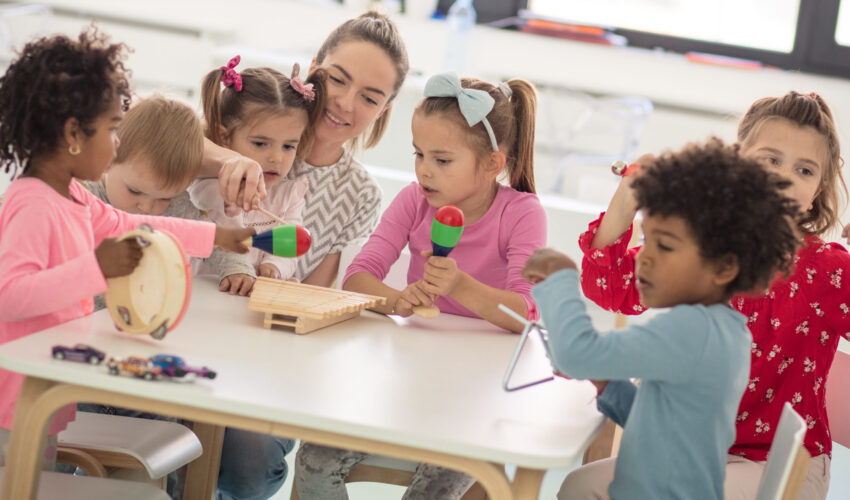Transitions are a part of daily life that can be challenging, particularly for children. Given the multitude of transitions children experience, this can be very stressful for them. As early education professionals, you have an opportunity to help reduce the stress around transitions. Whether children are leaving the care of their families for the first time, entering a new age group, or going to a different program, children need to know what to expect. Transition plans can help children and parents adjust successfully.
From Home to Program
Transitioning from home to a program begins with open communication between your program and families. Here are some strategies you can implement:

- Suggest families visit your program with their children before their first day.
- Offer abbreviated days in the beginning that gradually lengthen to a full day of care.
- Allow children to bring a special book or other item from home.
- Have a family photo wall or an “all about me” wall so children feel connected to their family while away from home.
- Build times for transition into the daily schedule.
From One Activity to Another
All children benefit when you help them prepare for their next activity. And since most young children can’t tell time, they rely on the order of activities throughout the day to be their clock. Having a predictable schedule brings children a sense of security. Too many stops and starts can frustrate children, but seamless transitions can become part of the routine and create extended learning opportunities. Consider these ways you can include transitions in your written daily schedule.
- Display a visual schedule with pictures. You can introduce the daily schedule during circle time and refer to it throughout the day.
- Use a sound, such as a chime, bell, or music, to signify a change in activity.
- Incorporate a helper to announce a transition with a special saying, rhyme, or countdown.
- Invest in a visual timer that changes colors to show time lapse. For example, there are timers that change color from green to red to show how much time is left for an activity.
- Keep your schedule consistent. Children will then learn to anticipate and expect when transitions will happen.
- Make sure families know the daily schedule. They can discuss the schedule at home. This is a proactive way to help the child feel more confident when coming into the classroom.
Including transitions in the daily routine can help children understand your expectations as well as encourage positive behaviors. Using transitions in your program also demonstrates the effective implementation of teaching strategies, which is part of the Developmentally Appropriate Learning and Practice content area within the Maryland EXCELS Standards.
From One Classroom to Another
Transitioning into another age group is an important time for a child. Children will likely be changing classrooms and teachers, and helping them feel comfortable in their new environment is critical. Talk with families about their expectations and goals for their children. Provide the opportunity for the children to meet with their new teachers and spend time in their new classrooms. Give the new teachers a chance to discuss learning strategies with the current teachers of the children who are aging up. With everyone involved in the transition to a new age group, children will feel supported and confident in their new environment. Below are some tips to create smooth transitions between classrooms that help children thrive.
- Schedule a shared playground time with the children, their current teachers, and their new teachers. This is a friendly non-threatening way to introduce the new adults to the children.
- Encourage new teachers to spend time with the children in their current classrooms helping with activities. This could include being a guest reader or special snack helper.
- Arrange for the new teacher to be a morning greeter so the families and children can get to know them. Children will then see the relationship building between their family and their new teacher encouraging trust and security.
- Invite the children to visit their “older” classroom and give them time to explore the layout and materials.
- Create an activity where the current children of the new classroom and their teacher interact with the new, younger students.
- Invite the families to an informational meeting that includes the child’s current and new teachers to discuss the transition together. This shows families the teachers are working together in one unified program to support their children.

Helping children and their families through transitions is an important part of having a quality program. Developing transition plans will not just help families adjust to the necessary changes in their child’s life but will also give children valuable skills they can apply throughout their lives.
Learn how these tips relate to Maryland EXCELS standards for Transition Plans.

